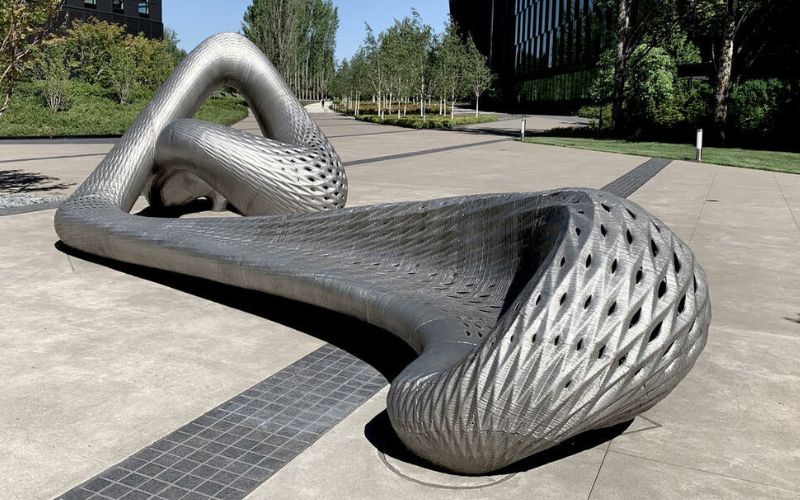Back | Blog posts overview
Printing a stainless steel dragon
15/02/2023
Most 3D printed objects are less then 30cm long. So, how is the 10m long Oregon Dragon Bench possible? Instead of using powder, the bench was built layer by layer applying a robotic welding technology called “WAMM”. Made with 2209 duplex stainless steel weld wire, the Oregon Dragon Bench exemplifies how 3D printed metal structures can do more with less.

© Joris Laarman
Take a rest on the serpentine Oregon Dragon Bench at the Nike Headquarters, but don’t be surprised if you want to get up and move. The bench’s textured, perforated surface pattern evokes the flexible fabric and lightness of athletic sneakers. The ridges are not only stylistic but also hint at how the bench was made: by layering melted metal wire. Wire Arc Additive Manufacturing (WAMM) works similarly to powder-based additive manufacturing (AM), which makes up the bulk of 3D metal printed objects and structures. But unlike powder AM, which is restricted to the size of the printing unit, WAMM structures are built without these limitations by a welding robot in an open or enclosed space.
One consideration for the future of 3D printed stainless steel structures is the rougher-surface finish produced layer by layer. The small crevices between each layer can be hotspots for corrosion, and thus the process favours selecting more corrosion resistance grades like molybdenum-containing duplex stainless steels. The Oregon Dragon Bench has the potential for salt, dirt and pollution to accumulate in its many tiny ridges, so the 3% molybdenum in 2209 duplex stainless steel helps resist these additional corrosion risks.
3D printing will be increasingly important to modern economies worldwide. The undulating Oregon Dragon Bench helps explain why: 3D printing allows for fantastic shapes not possible with traditional manufacturing. Importantly, the greater range and complexity of possible designs applies to industrial applications, including oil and gas and maritime, where molybdenum-containing stainless steels are already standard.
Discover more about the role molybdenum plays in this bench.
Back | Blog posts overview

